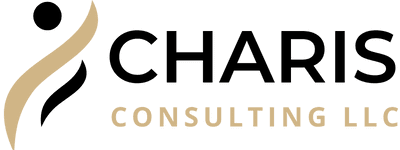I have worked with several clients in various industries as an IT service management consultant. In my experience, organizations face several common issues and challenges when implementing or improving their IT service management processes.
In this blog, I will discuss the top 7 challenges organizations face when trying to improve their IT service management. I will also provide some tips and advice on overcoming these challenges.
1. Assessing Current ITSM Processes
One of the challenges encountered when trying to improve IT service management processes is assessing current processes. This is a necessary step to identify any improvement areas and create essential changes.
To assess the current processes, it is essential to use some assessment tools. This could include surveys or interviews with staff, customers, and other departments. Other methods involve:
- Analyzing processes manually.
- Documenting processes and workflows.
- Using a benchmarking tool to compare IT service management processes to those of other organizations.
Once the current processes have been assessed, it will be easier to identify areas of improvement, create new techniques, and determine the best way to implement changes. A good IT service management consultant can advise and assist with this process.
2. Developing ITSM Strategies
Once the current IT service management processes have been assessed, an IT service management consultant can help you create strategies to implement proposed changes. Depending on your organization’s needs, these strategies include building an internal team or outsourcing IT service management to an external provider.
The consultant can also help you develop goals and objectives for your IT service management. This would include establishing service-level targets to ensure that customer requirements are met and setting specific points of contact for customers.
In addition, IT service management strategies may include implementing methods such as time-based backups and disaster recovery planning. This strategy allows IT service management to prevent and protect the organization from potential disasters proactively.
Finally, IT service management strategies must include training and documentation of IT service offerings. This allows the organization to maximize and track the effectiveness of IT service offerings.
3. Implementing ITSM Frameworks
An IT service management consultant can help you implement ITSM frameworks tailored to your business’s unique needs. IT service management frameworks provide various services and capabilities that enable organizations to effectively and efficiently deliver IT services.
An ITSM framework should include principles, processes, and procedures for offering, managing, and delivering services. It should also cover all components of the IT service lifecycle, which spans from developing IT service strategies to planning, designing, developing, deploying, maintaining, and improving IT services. To ensure compliance, it should also include updated standards and metrics for measuring the performance of IT services.
When developing or improving an existing ITSM framework, the consultant should review processes to ensure they are adequately communicating requirements throughout the organization and ensuring processes are completing the necessary steps for IT service management. It should also have IT personnel receive formal training and certification on different ITSM frameworks. A practical ITSM framework helps you provide stable, controlled, and cost-effective IT services.
4. Process Design and Documentation
An ITSM consultant should help you create effective processes and design and document them. This is so that the methods are easy to comprehend and follow, and they should be written and adhered to to ensure the process can be observed and understood throughout the organization.
An ITSM consultant should be able to map out the existing and proposed processes. They should be aware of the different industry standards and able to map the solutions to match the best practices in the industry. This will help the consultant create processes best suited for the organization.
When designing processes and the overall ITSM framework, the consultant should remember that the created solutions should be tailored to the organization’s needs and not just a one-size-fits-all solution. The answers must be scalable and can be adjusted over time to match the needs of the organization as it continues to grow. Additionally, the consultant should be aware of regulatory and industry compliance and ensure the solutions adhere to all necessary rules and regulations.
When complete, all processes should be thoroughly tested and documented. Documentation is essential to ensure the procedures can be followed effectively moving forward. A robust ITSM framework requires effective strategies, design, and documentation to ensure all services can be managed and delivered accurately and efficiently.
5. Change Management

When implementing a new ITSM framework, a consultant should also know about change management. Change management is a process that is used to ensure that new initiatives are executed as smoothly as possible. It should follow specific process steps, such as identifying the changes needed, assessing the risks and impacts, evaluating the options, and drawing up a plan of action.
The consultant should know the tools and processes involved in change management and how to use them. They should be able to communicate the changes to stakeholders clearly and concisely and ensure that all stakeholders are on board with the changes. Additionally, the consultant should be able to track the changes to ensure they are implemented as quickly and smoothly as possible with minimal disruption and thriving in the long run.
A solid understanding of change management is essential when implementing a new ITSM framework. A consultant should have an in-depth knowledge of change management processes and should be able to ensure that the best possible solutions are chosen and that minor disruption occurs when changes are made.
6. Tool Selection and Implementation
Once the change management processes are in place, the next step is tool selection and implementation. The consultant should thoroughly understand the different ITSM tools available and what they can do. They should be able to evaluate the other tools and choose an ideal tool based on the organization’s needs.
The consultant should also understand the different implementation processes and how to ensure the successful implementation of the tools. This may involve educating the staff on the tools and how to use them, providing support and assistance during the implementation process, and ensuring the implementation is done correctly.
The consultant should know how to set up the tools correctly and test them before putting them into production. They should be able to troubleshoot potential problems during the implementation process and ensure that the organization gets the best possible service for their needs.
7. Continuous Improvement
Once the tool is successfully implemented, the consultant should focus on the continuous improvement process of the ITSM. Continuous improvement helps ensure that the organization’s needs are being met and the tools are being used to their fullest potential.
The consultant should go through the different processes and check for areas that can be improved upon. This may involve training users on how to use the tools more effectively, making changes to the processes, and recommending changes to the devices themselves.
The consultant should have an understanding of the different performance metrics that can be used to measure the effectiveness of the tools and processes and should be able to advise on which metrics should be used to monitor performance. They should also be able to provide an analysis of the data and make recommendations for changes that can lead to improved results.





